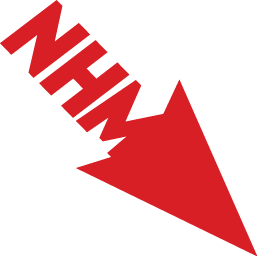This Q&A was conducted following Jonas Staal and Florian Malzacher’s Training for the Future, a utopian training camp held from September 20-22, 2019 at the Ruhrtriennale, Bohum, Germany.
How did you approach the notion of the ‘training’ and what does the term mean to your practice?
Our collective understands training not as the endless rehearsal of a future yet-to-come, but the practical development of competencies that strengthen our collective capacity to make the future through struggle. We train to sharpen our tools, to organize ourselves, and to establish the myths that we need to build and strengthen collectivity. When Not An Alternative was invited to Training for the Future, we focused less on the process of training than on the potential outcomes. What generic tools could we offer that could be conceivably adopted and deployed in struggles around the world, regardless of the objective conditions?
“Inventing the Radical” aimed to train trainees in a way of seeing our collective power, which Not An Alternative argues is inscribed in the “language in common”: the visual and communicative forms through which social movements and other collective formations are made to appear. Before we can effectively contribute to the building of the language in common, we have to be able to see where it already exists, to train our sights on the signs of our power that are already inscribed in the landscape. Our collective’s position is that the capacity to build on the language in common requires, first, that we can identify the signs of collective power that already exist.
Because of the specific setting of the training (a former industrial plaza in a German city we had never been to), we embraced the visual language of the training facility as a resource. We asked trainees to see the neo-constructivist visual language of the training facility (which itself is an iteration on the visual language of Soviet design) as a case study in the practice of iteration. We asked trainees to develop an inventory of the signs and symbols that demarcated the partisan dimensions of the design. We then sent the trainees outside with materials leftover from the installation with the task of iterating on the visual language that was already there, to produce forms of “communist graffiti” beyond the immediate training site. We wanted trainees to take away one central idea: collective power is not built through the production of novel or innovative forms, but through the conscious and unconscious iteration on the language in common we inherit, that we learn to recognize as ours, and that holds us together as a “we.”
In a time of dystopian normativity, what does the notion of the ‘future’ mean to you?
The Bulletin of Atomic Scientists’ Doomsday Clock tells us that it is “100 seconds before midnight.” Not only is it easy to imagine the end of the world, but also the end of capitalism. The paralyzing problem is that both ends are imagined to correspond to the termination of humanity as a whole. Convinced by the “dystopian” tendencies in contemporary discourse and climate science, many on the left write off the possibility of egalitarian emancipation, leaving us without firm ground to stand on. But as Potawatomi philosopher Kyle Whyte reminds us, the dispossessed peoples of the world have struggled under apocalyptic conditions for centuries—not just for survival, but for the collective flourishing of human and more-than-human life. There are reasons to live and reasons to struggle, even and especially when the future is not guaranteed.
For Not An Alternative, the future is not in the future. It is neither a vision of utopia or dystopia. Rather, it is a horizon for struggle in the here-and-now. We inscribe the future in the present by insisting not on the certainty of planetary collapse, nor on the certainty that communism will follow the death of capitalism, but on the indeterminacy of the future. If the inevitable names the enclosure of the future, the indeterminate points to the common beyond and beneath. When we understand that the future is indeterminate, we do not sit and wait for the opportune moment, but, like Marx’s mole of history, we plot and scheme in order to produce the opportunity to strengthen our side.
What does it mean to reclaim the future’s means of production?
We have been arguing that our collective counterpower grows and develops in a dynamic relation to the counterpower we inherit from our ancestors, from revolutionaries whose struggles have informed our own. By recognizing that our struggles fall within a long tradition of resistance, and iterating on the means of communication that we inherit, we build power and make the future possible. In this sense, we would suggest that the means of the production of the future do not need to be “reclaimed.” They have never been abandoned. Thus, our collective task is less to reclaim the means of producing the future, than to consciously and intentionally build on the means of production we inherit. When we iterate on the work of our ancestors, we produce a gap in the capitalist world—an opening in which to affirm our collective difference and construct an infrastructure to support it.
This Q&A was originally published in Training for the Future Handbook, edited by Florian Malzacher and Jonas Staal (Sternberg Press, 2021), 286-290.
